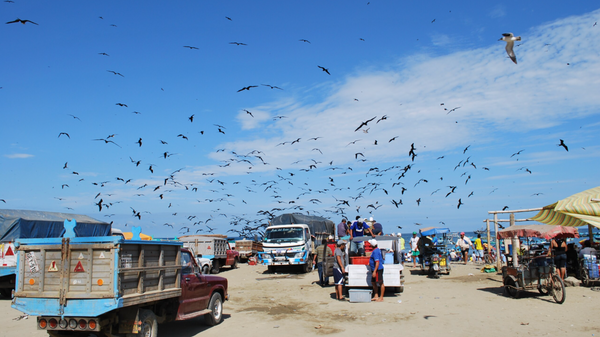
Bumblebees have become increasingly stressed by changes in climate over the past century, researchers examining museum specimens have found.
Bees develop asymmetrical wings when they experience stress during development, and by examining a series of preserved specimens and their dates, the scientists found bees showed higher levels of wing asymmetry in hotter and wetter years.
Dr Andres Arce, now at the University of Suffolk and one of the authors of the paper published in the Journal of Animal Ecology, said: “Our goal is to better understand responses to specific environmental factors and learn from the past to predict the future. We hope to be able to forecast where and when bumblebees will be most at risk and target effective conservation action.”
Dr Richard Gill, at Imperial College London and another one of the authors, said bumblebees “may be in for a rough time over the 21st century” as “hotter and wetter conditions” were predicted to place bumblebees under higher stress and climate change would result in these conditions becoming more frequent.
In recent years, bumblebee populations have declined in many areas.
A second study, published in Methods in Ecology & Evolution, employed DNA methods usually used to examine remains of ancient humans or woolly mammoths. It was the first time the technique had been used on an insect population.
The researchers used one leg from each of the preserved bees they studied to sequence bumblebee genomes dating back more than 100 years. The authors say these advances will allow researchers to determine how stress may lead to a loss of genetic diversity.
Dr Victoria Mullin, from the Natural History Museum, one of the authors, said: “Museum insect collections offer an unparalleled opportunity to directly study how the genomes of populations and species have been affected by environmental changes through time. However, they are a finite resource and understanding how best to utilise them for genetic studies is important.”
Prof Ian Barnes, also from the Natural History Museum and the paper’s senior author said: “One of the main problems with museum collections is that the quality of DNA can be very variable, making it difficult to predict which type of analyses we should do. We now have a much better idea about DNA preservation in insect collections, which is a massive boost to our ongoing work to understand the history and future of insect populations.”
The team will now use the data to examine how bee genomes have changed over time, analysing how whole populations have adapted – or not – to changing climates.







